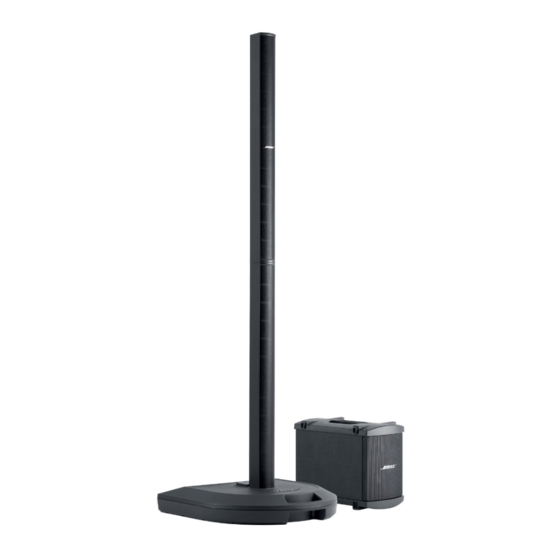Bose Personalized Amplification System Руководство по устранению неполадок - Страница 6
Просмотреть онлайн или скачать pdf Руководство по устранению неполадок для Усилитель Bose Personalized Amplification System. Bose Personalized Amplification System 50 страниц.
Также для Bose Personalized Amplification System: Руководство пользователя (28 страниц)

Note: Refer to PS1 Power Stand schematic sheets in the service manual, reference number
264018-SM, for the following information. The information inside the brackets [ ] is the
component's grid location on the schematic sheet.
The PS1 Power Stand combines the traditional functions of a mixer, digital controller (system
EQ and limiter), power amplifier and mechanical speaker stand. Figure 1 on page 3 shows the
signal flow through the power stand.
The power stand consists of five parts: a switching power supply, 3 channels of amplification on
a common PCB, and input panel PCB, DSP PCB, and MCU PCB. The power supply connects to
the MCU PCB via a the 8 pin connector CN409 [microprocessor PCB sheet 2, A1], four chan-
nels of analog inputs on the panel are connected to the DSP PCB via a 6 pin connector CN104
[DSP PCB sheet 1, B1], analog output signals on the DSP panel are connected to input panel
via a 3 pin connector CN115 [input panel PCB sheet 2, D1]. SPDIF IN on the input panel is
connected to the DSP PCB via a 2 pin connector CN112 [DSP PCB sheet 2, B4], SPDIF OUT
on the DSP PCB is connected to input panel via a 2 pin connector CN113 [DSP PCB sheet 2,
C8].
For Channel 1 or 2 the signal is input either through the balanced XLR connector or through the
¼" unbalanced connector. The ¼" connector has a very high impedance (900k ohms) to allow
direct connection of passive guitars or bass guitars. The signal is then amplified by the adjust-
able pre-amplifier. After the pre-amplifier, the signal can be accessed at the balanced XLR line
level output.
Next the signal is routed through a digitally controlled analog volume control. Then, the signal is
routed through the insert loop connector. If there is no plug in the insert jack, the signal will be
routed through. Otherwise the signal will be routed to the "ring" of the connector and is expected
to return from the "tip". The signal is then digitized in the A/D converters and processed in
software. Software provides the following functions.
•
Channel 1&2: measuring level for LED
•
Channel 1&2: noise gate
•
Channel 1&2: preset EQ
•
Channel 1&2: channel volume
•
Sum channels 1 to 4
•
Master Volume Control
•
System EQ and crossover (for L1 and B1)
•
Limiter & soft clipper (for L1 and B1 amplifiers)
Signal Processing
Signal processing is mainly implemented by the DSP and includes the following functions:
•
Noisegate & limiter
•
Tone control & volume control
•
Parameter equalize & System equalizer
•
Clip calculate
The signal flow chart is as follows (refer to figure 1):
THEORY OF OPERATION
6
